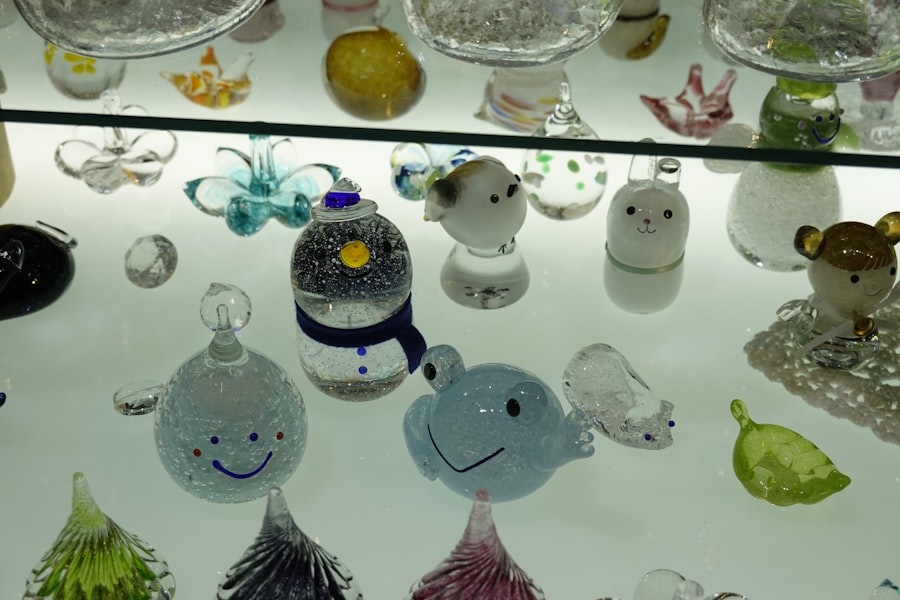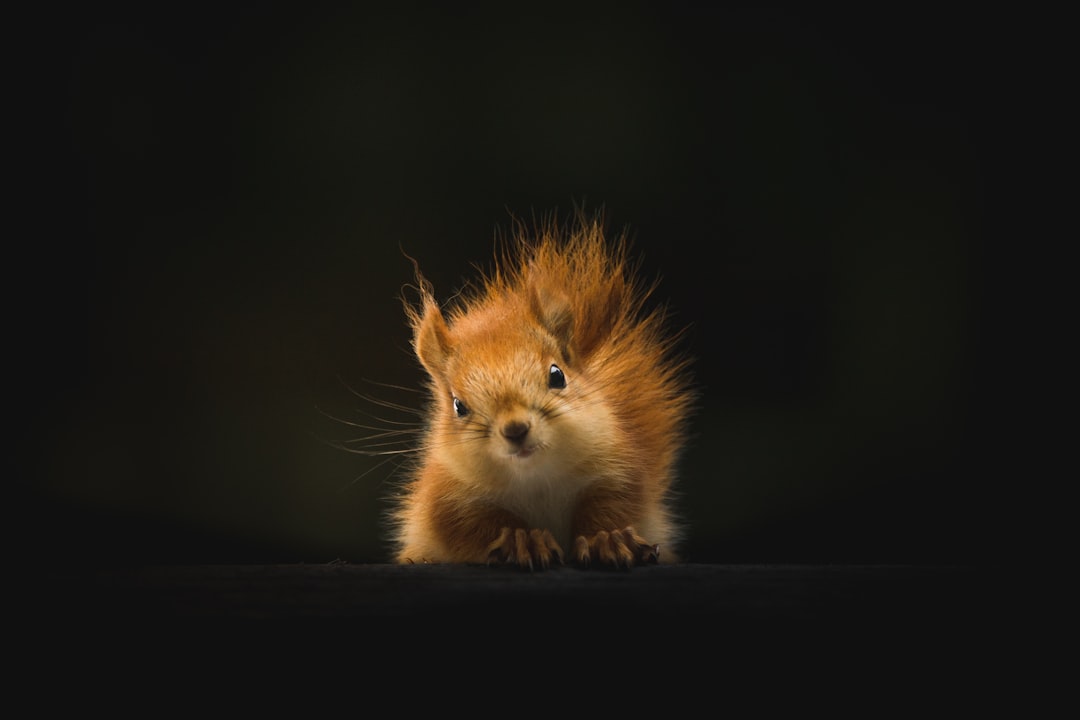KAWS, the moniker of artist Brian Donnelly, has emerged as a significant figure in contemporary art, blending elements of street culture, fine art, and commercial design. Born in 1974 in Jersey City, New Jersey, KAWS initially gained recognition as a graffiti artist in the 1990s, where he began to manipulate and reinterpret popular cartoon characters. His work often features a distinctive style characterized by bold colors, cartoonish forms, and the iconic “XX” eyes that have become synonymous with his brand.
KAWS’s ability to bridge the gap between high art and popular culture has allowed him to cultivate a diverse audience, making his work accessible yet deeply resonant. The evolution of KAWS’s artistic journey is marked by a series of pivotal moments that have shaped his identity as an artist. From his early days creating street art to his later ventures into large-scale sculptures and commercial collaborations, KAWS has consistently pushed the boundaries of what art can be.
His transition from the streets to galleries and museums reflects a broader trend in contemporary art where traditional distinctions between high and low culture are increasingly blurred. This democratization of art has not only expanded KAWS’s reach but has also sparked conversations about the role of commercialism in artistic expression.
Key Takeaways
- KAWS is a renowned American artist known for his iconic cartoon-inspired characters and graffiti art.
- Life-size KAWS resin figures have gained popularity in recent years, with collectors and art enthusiasts seeking to own these large-scale sculptures.
- The process of creating life-size KAWS resin figures involves meticulous sculpting, molding, and casting to capture the intricate details of the original artwork.
- The impact of life-size KAWS resin figures in the art world has been significant, attracting attention from both traditional art institutions and contemporary art collectors.
- Collectors are drawn to the popularity of life-size KAWS resin figures due to their unique aesthetic and the artist’s cult following, making them highly sought after in the art market.
The Rise of Life-Size KAWS Resin Figures
The emergence of life-size KAWS resin figures represents a significant milestone in the artist’s career, marking a shift from two-dimensional works to three-dimensional sculptures that invite interaction and engagement. These figures, often depicting KAWS’s signature characters such as Companion and BFF, have captivated audiences with their playful yet poignant aesthetics. The life-size aspect of these figures adds a new dimension to KAWS’s work, allowing viewers to experience his creations in a more immersive way.
The tactile nature of resin as a medium further enhances this experience, as it invites touch and exploration. The popularity of life-size KAWS figures can be attributed to several factors, including their striking visual appeal and the cultural commentary embedded within them. These sculptures often evoke feelings of nostalgia while simultaneously addressing themes of consumerism and identity.
The juxtaposition of childlike forms with adult themes creates a dialogue that resonates with a wide audience. As collectors and art enthusiasts seek to own a piece of this unique blend of playfulness and depth, the demand for life-size KAWS figures has surged, leading to their prominence in both galleries and private collections.
The Process of Creating Life-Size KAWS Resin Figures

Creating life-size KAWS resin figures is a meticulous process that involves multiple stages, from conceptualization to final production. Initially, KAWS sketches his ideas, often drawing inspiration from his previous works or current cultural phenomena. These sketches serve as blueprints for the sculptures, guiding the transition from two-dimensional concepts to three-dimensional forms.
Once the design is finalized, KAWS collaborates with skilled artisans and fabricators who specialize in sculpting and casting. The next phase involves sculpting the figure, typically using clay or digital modeling techniques. This stage is crucial as it allows for adjustments and refinements before moving on to the casting process.
Once the sculpture is perfected, it is cast in resin—a material known for its durability and ability to capture intricate details. The casting process requires precision; any imperfections can compromise the final product. After casting, each figure undergoes meticulous finishing touches, including painting and polishing, ensuring that it meets KAWS’s high standards before being released to the public.
The Impact of Life-Size KAWS Resin Figures in the Art World
| Impact of Life-Size KAWS Resin Figures in the Art World |
|---|
| Increased foot traffic in art galleries and museums |
| Raised awareness and interest in contemporary art |
| Generated media attention and social media buzz |
| Boosted sales and demand for KAWS artwork |
| Attracted a younger and diverse audience to art spaces |
Life-size KAWS resin figures have made a significant impact on the contemporary art landscape, challenging traditional notions of sculpture and redefining the relationship between art and consumer culture. By creating large-scale works that are both visually striking and conceptually rich, KAWS has opened up new avenues for dialogue within the art community. His figures often serve as commentary on societal issues such as mental health, loneliness, and the complexities of modern life, inviting viewers to reflect on their own experiences.
Moreover, KAWS’s life-size figures have blurred the lines between fine art and commercial products. Their presence in high-profile exhibitions alongside established artists has legitimized their status as serious art objects rather than mere collectibles. This shift has prompted discussions about the role of branding in contemporary art and how artists can navigate the commercial landscape without compromising their artistic integrity.
As KAWS continues to push boundaries, his work challenges both collectors and critics to reconsider their definitions of art.
The Popularity of Life-Size KAWS Resin Figures Among Collectors
The allure of life-size KAWS resin figures among collectors can be attributed to several factors that extend beyond mere aesthetics. For many collectors, owning a piece by KAWS represents not only an investment in art but also a connection to contemporary culture. The figures often evoke nostalgia for childhood cartoons while simultaneously addressing adult themes, creating a unique emotional resonance that appeals to a broad demographic.
This duality makes them highly sought after in both art circles and popular culture. Additionally, the limited availability of life-size KAWS figures contributes to their desirability. Many pieces are produced in small editions or as exclusive releases tied to specific events or collaborations.
This scarcity drives demand among collectors who view these figures as not just decorative objects but as valuable assets that may appreciate over time. The combination of KAWS’s artistic reputation and the cultural significance of his work has led to a thriving secondary market where collectors are willing to pay premium prices for rare pieces.
The Collaborations and Installations of Life-Size KAWS Resin Figures

KAWS’s collaborations with various brands and institutions have further elevated the profile of his life-size resin figures. Notable partnerships with companies like Nike and Uniqlo have introduced his work to mainstream audiences, blending fashion with fine art in innovative ways. These collaborations often feature limited-edition releases that incorporate KAWS’s signature designs into wearable items or lifestyle products, effectively merging art with consumer goods.
Such initiatives not only broaden his reach but also challenge conventional boundaries between different creative fields. In addition to commercial collaborations, KAWS has also engaged in significant public installations featuring his life-size figures. These installations often take place in prominent urban spaces or cultural institutions, allowing for greater accessibility to his work.
For instance, his large-scale Companion sculpture has been displayed in various locations worldwide, drawing crowds and sparking conversations about public art’s role in urban environments. These installations serve not only as artistic expressions but also as social commentaries that engage with local communities and encourage public interaction.
The Value and Investment Potential of Life-Size KAWS Resin Figures
The financial aspect of collecting life-size KAWS resin figures cannot be overlooked, as they have become increasingly recognized as valuable investment pieces within the art market.
Collectors often view these figures not just as decorative items but as assets that can yield substantial returns on investment.
Auction results for KAWS pieces frequently reflect this trend, with some figures fetching prices well above their original retail value. However, investing in life-size KAWS figures requires careful consideration of market trends and collector sentiment. While many pieces have seen impressive appreciation, fluctuations in demand can occur based on various factors such as economic conditions or shifts in artistic trends.
Collectors must remain informed about the evolving landscape of contemporary art and be prepared for potential risks associated with investing in high-value pieces. Nonetheless, for those who appreciate both the aesthetic and financial aspects of collecting, life-size KAWS resin figures present an intriguing opportunity.
The Future of Life-Size KAWS Resin Figures in Contemporary Art
As contemporary art continues to evolve, the future of life-size KAWS resin figures appears promising yet uncertain. With KAWS at the helm of this movement, there is potential for further innovation in both form and concept. The artist’s willingness to experiment with new materials and techniques suggests that future iterations may push boundaries even further, exploring themes that resonate with an ever-changing cultural landscape.
Moreover, the increasing intersection between technology and art presents exciting possibilities for KAWS’s future creations. The rise of digital art forms such as NFTs (non-fungible tokens) could influence how collectors engage with his work, potentially leading to new formats for life-size figures or interactive installations that incorporate augmented reality elements.
As KAWS continues to navigate this dynamic environment, his ability to adapt while maintaining his unique voice will be crucial in shaping the future trajectory of his life-size resin figures within contemporary art discourse.
FAQs
What are resin figures?
Resin figures are collectible sculptures made from resin, a type of plastic material. They are often used in the art world and as collectible items for pop culture enthusiasts.
What does “life size” mean in the context of resin figures?
“Life size” in the context of resin figures refers to the scale of the figure being the same as that of a real-life human or object. In the case of life size Kaws figures, they are created to be the same size as the original artwork or character.
Who is Kaws?
Kaws is the moniker of Brian Donnelly, an American artist and designer known for his pop art and graffiti-inspired work. He is particularly famous for his stylized characters and figures, which have gained a significant following in the art world and popular culture.
What are the characteristics of Kaws figures?
Kaws figures are known for their distinctive cartoon-like aesthetic, often featuring exaggerated features such as large heads and hands. They are typically created in bold, vibrant colors and are highly sought after by collectors.
How are resin figures made?
Resin figures are typically made through a process called resin casting, where liquid resin is poured into a mold and allowed to harden. The resulting figure is then removed from the mold and may undergo additional painting or finishing processes to achieve the desired look.




